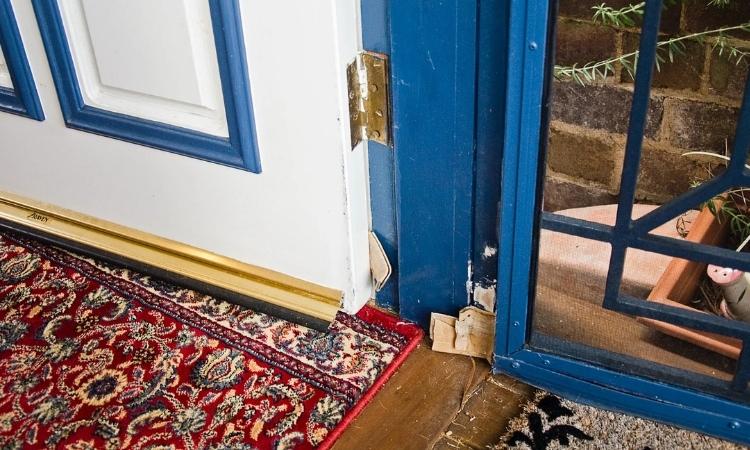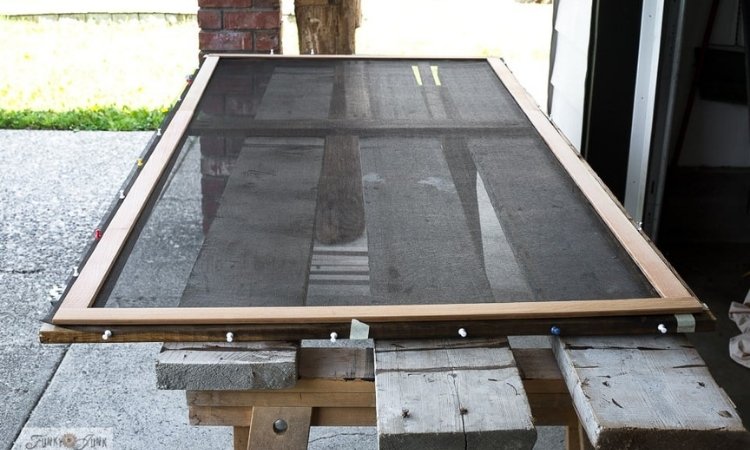If you’ve been searching for how to fix a sagging wooden screen door, chances are, your once well-aligned door is now dragging, scraping the floor, or refusing to close properly. Many homeowners in Singapore face this issue, especially those living in older terrace houses or landed properties. The high humidity, frequent rainfall, and sudden changes in weather cause wooden doors to shift, swell, and sag over time.
I had the same problem with my screen door at my grandmother’s house in Hougang. The door used to drag against the tiled floor, making it hard to open or close. After a few failed attempts, I finally found a proper method that worked without calling a handyman.
In this article, I’ll show you exactly how to fix a sagging wooden screen door using simple tools and clear steps that anyone in Singapore can follow. PS Home Maintenance Singapore explains how to fix a sagging wooden screen door in Singapore. They also offer door replacement, door stopper installation, and carpentry services in Singapore.
Why Do Wooden Screen Doors Sag in Singapore?
Before diving into the fix, let’s understand the problem. Singapore’s tropical weather isn’t kind to wood. High humidity and temperature swings cause timber to expand and contract. Over time, this can weaken the screws, hinges, or even warp the frame. Add in daily wear and tear, and your wooden screen door starts to lean or drag.
Other common reasons:
- The hinges have loosened.
- The frame has shifted slightly due to house settling.
- The door was installed without proper support.
- Screws have rusted or lost grip in the wood (a big issue in our humid conditions).
Tools and Materials You’ll Need
You don’t need fancy equipment. You’ll find most of these at your nearest hardware store, whether at Selffix, Home-Fix (now FairPrice Xtra outlets), or a local shop in Geylang.
- Screwdriver (Phillips and flathead)
- New longer wood screws (stainless steel recommended for Singapore weather)
- Drill with bits (optional but useful)
- Wood filler or toothpicks (for stripped screw holes)
- Carpenter’s square or level
- Adjustable door hinge pins (optional)
- Wood glue
- Small wedges or shims
Fix a Sagging Wooden Screen Door
1. Check the Top Hinge First
Stand in front of your door and look at how it hangs. If the top corner of the door near the handle is lower than it should be, the top hinge might be loose.
- Tighten all the hinge screws with a screwdriver.
- If the screw just turns and doesn’t hold, the hole is stripped.
- Push a few toothpicks coated in wood glue into the hole, let it dry, and then screw it back in. This helps the screw hold firmly again.
2. Use Longer Screws for a Stronger Hold
Replace the original screws with longer stainless steel ones. In my own fix, I used 2.5-inch screws from a hardware shop.
- Longer screws reach deeper into the door frame and hold better.
- Always choose stainless steel screws because they don’t rust in our climate.
3. Check the Door Frame Alignment
Sometimes, it’s not the door but the frame that has shifted. Use a carpenter’s level to see if the frame is straight.
- If one side is slightly off, you can slide a thin wooden shim behind the hinge plate to adjust the angle.
- This small tweak helps the door close smoothly again.
4. Add a Middle Hinge (Optional but Effective)
If your screen door is wide or heavy, two hinges may not be enough. You can install a third hinge in the middle of the door.
- Measure the middle point between the top and bottom hinges.
- Screw in the new hinge using stainless steel screws.
- This spreads the door’s weight and reduces sagging.
5. Smooth the Bottom Edge If Needed
In some homes, the bottom of the door scrapes against the floor tiles or parquet. This may be due to swelling from rainwater or regular mopping.
- Sand the bottom edge lightly with a fine-grit sandpaper.
- After sanding, seal the edge with clear wood varnish to prevent future swelling.
This is what I had to do in a terrace house in Kembangan, where the bottom edge would get stuck every rainy season.
When to Call a Local Handyman
If the frame is badly warped or the door has termite damage, fixing it yourself might not work. In that case, hire a handyman in Singapore. Many residents use these services to repair a sagging wooden screen door without hassle.
Professional help is best when:
- Screws won’t stay in even after repair
- The frame is loose or cracking
- The entire door feels unstable
Final Tips: Sagging Wooden Screen Door Fixing That Lasts
- Use treated or sealed wood for replacement parts.
- Always use rust-resistant hardware.
- Perform a quick check every 6–12 months, tighten screws, and inspect hinges before problems return.
- Clean and dry the door after heavy rain
- Avoid hanging heavy items on the door
This kind of sagging wooden screen door fixing is not a one-time job. Regular checks help prevent the same issue from happening again.
Conclusion
Whether you’re living in a heritage shophouse or a modern terrace home, knowing how to fix a sagging wooden screen door can save you time and money. A little time and a few standard tools are all you need to revive your door’s look and how it works.
Because it rains a lot in Singapore, maintenance should be carried out regularly. If your screen door drags the next time you use it, there is no need to panic. Use this guide for a reliable way to fix a sagging wooden screen door in Singapore that works.
Let the breeze in without the frustration.


